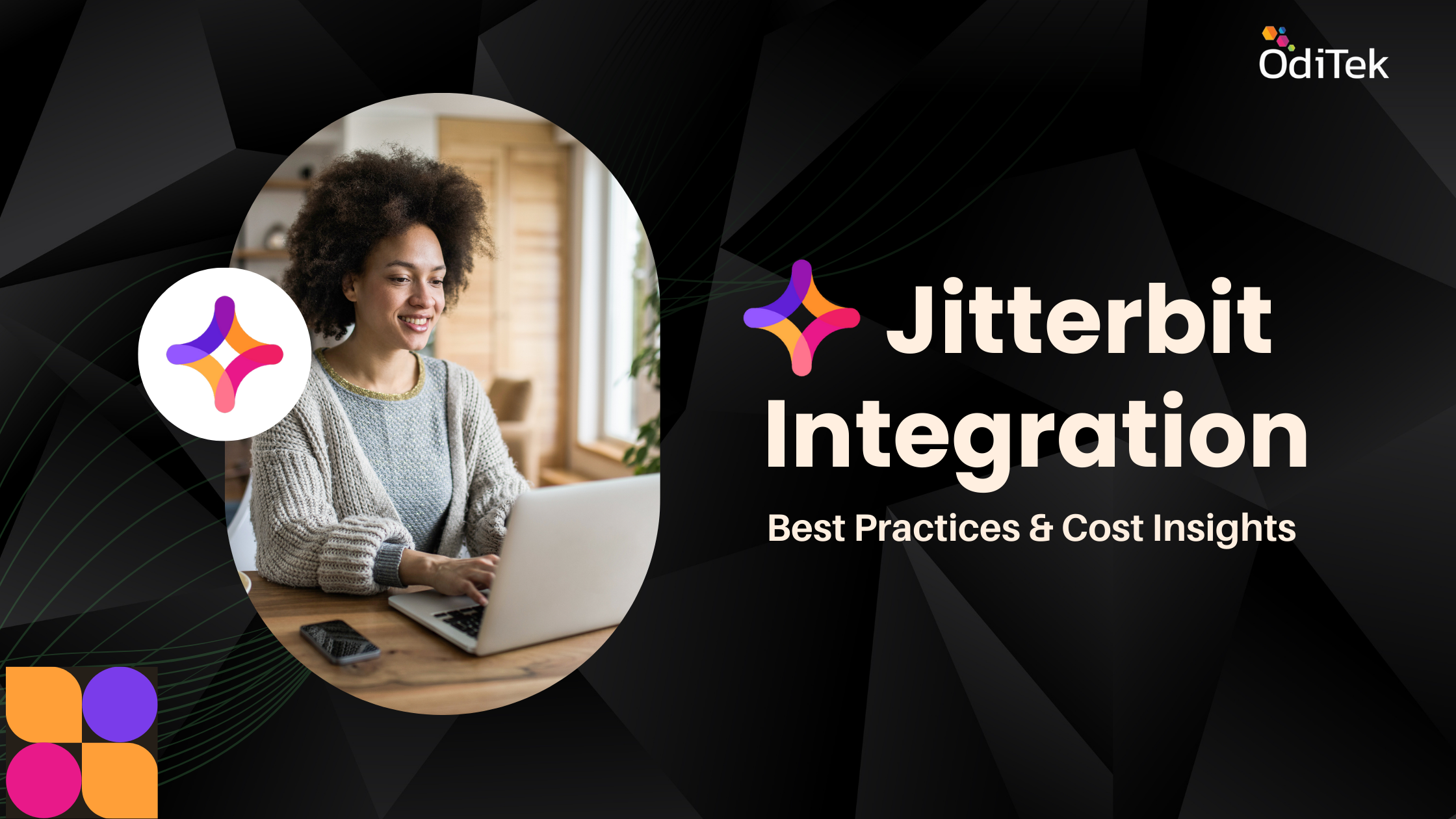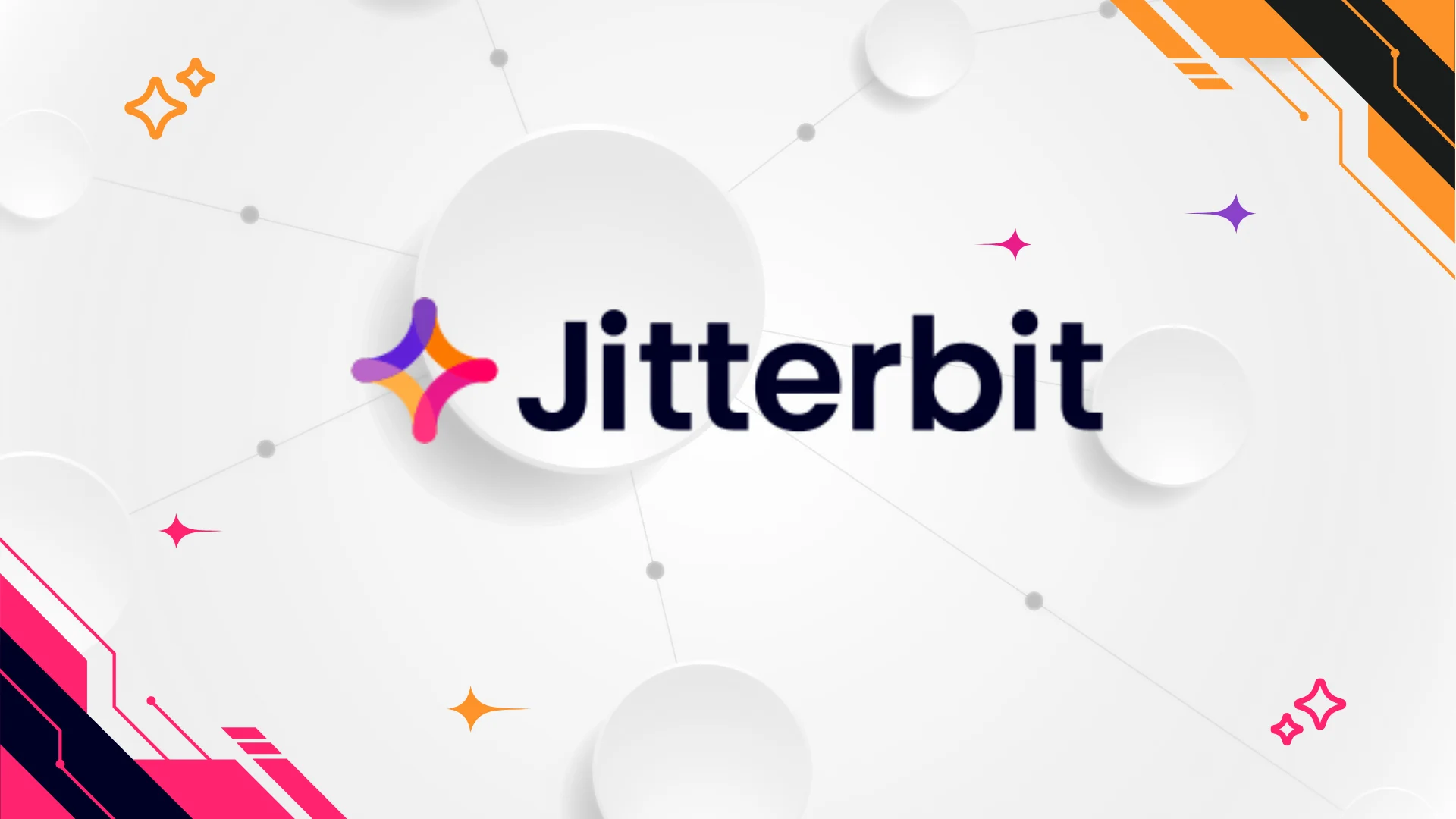Seamlessly integrating various software applications and data sources is vital for operational efficiency and strategic decision-making. Jitterbit, a leading integration platform, offers powerful tools to connect disparate systems, enabling smooth data synchronization and workflow automation. This blog delves into the intricacies of Jitterbit integration, explores best practices, discusses Jitterbit pricing and cost considerations, and highlights how OdiTek Solutions, a Jitterbit iPaaS partner, can assist businesses in maximizing their integration efforts.
Understanding Jitterbit Integration
Jitterbit Integration involves using the Jitterbit Harmony platform to connect different applications, databases, and systems within an enterprise. This integration enables seamless data flow, automated workflows, and improved communication between various software solutions.
Refer to our blog page to explore Jitterbit key features and use cases!
Benefits of Jitterbit Integration
Improved Data Accuracy: Eliminates data silos and ensures consistent and accurate data across all systems.
Enhanced Efficiency: Automates repetitive tasks, reducing manual effort and minimizing errors.
Better Decision-Making: Provides real-time data synchronization and advanced analytics for informed business decisions.
Scalability: Supports the integration of additional applications and data sources as the business grows.
Cost Savings: Reduces the need for manual data entry and minimizes the risk of costly errors.
Challenges in Integration and How to Overcome Them
1. Data Quality Issues
Ensuring that data is clean, consistent, and accurate is crucial. Regular data audits and the use of data validation tools can help maintain data quality.
2.Complexity of Integration
Integrating multiple systems can be complex. Breaking the integration project into smaller, manageable phases can simplify the process.
3. Security Concerns
Ensuring data security during integration is vital. Implementing robust security measures and compliance protocols can safeguard data.
4.Lack of Technical Expertise
Having skilled professionals who understand the intricacies of integration is important. Partnering with experts like OdiTek can bridge this gap.
Jitterbit Integration Best Practices
To ensure a successful Jitterbit integration, adhering to best practices is essential. Here are some key considerations:
1. Thorough Planning and Assessment
Begin by thoroughly assessing your integration needs and existing systems. Identify key data sources, applications, and workflows that need to be connected. Develop a strategic plan that outlines the integration goals, scope, and timeline.
2. Data Mapping and Transformation
Properly map and transform data to ensure consistency and accuracy across systems. Use Jitterbit’s data transformation tools to standardize data formats and structures, facilitating smooth data flow.
3. Incremental Implementation
Implement the integration in phases rather than attempting a large-scale rollout. This approach allows for testing and adjustments at each stage, minimizing risks and ensuring a smoother transition.
4. Robust Testing and Quality Assurance
Conduct rigorous testing to identify and resolve any issues before going live. This includes functional testing, performance testing, and user acceptance testing to ensure that the integration meets all requirements.
5. Comprehensive Documentation
Maintain detailed documentation of the integration process, including data mappings, workflows, and configurations. This documentation serves as a valuable reference for troubleshooting and future enhancements.
6. Continuous Monitoring and Optimization
After implementation, continuously monitor the integration to ensure optimal performance. Use Jitterbit’s monitoring tools to track data flows, identify bottlenecks, and make necessary adjustments to enhance efficiency.
Jitterbit Pricing and Cost Considerations
The cost of Jitterbit varies based on the specific needs and scale of the integration project. Jitterbit offers a range of pricing plans tailored to different business sizes and requirements.
Factors Influencing Jitterbit Cost
1. Scope of Integration
The number of applications and data sources being integrated can affect the overall cost. Larger, more complex integrations typically require higher investment.
2. Data Volume
Higher data volumes may require more robust infrastructure and resources, influencing the cost.
3. Customization Needs
Custom development and specific customization requirements can add to the cost of the integration project.
4. Support and Maintenance
Ongoing support, maintenance, and updates are essential for ensuring the long-term success of the integration, contributing to the overall cost.
While Jitterbit provides a highly customizable and powerful integration solution, understanding the pricing structure and cost implications is crucial for businesses planning their integration strategy.
OdiTek Solutions: Your trusted Jitterbit Partner
As a Jitterbit iPaaS (Integration Platform as a Service) partner, OdiTek Solutions brings a wealth of expertise and experience to the table, ensuring that clients maximize the benefits of their Jitterbit integration projects.
1. Expertise in Jitterbit Development
OdiTek’s team of experienced developers possesses in-depth knowledge of the Jitterbit Harmony platform, ensuring that clients receive customized solutions aligned with their specific business needs.
2. Tailored Integration Solutions:
OdiTek offers personalized integration solutions, addressing unique business requirements and ensuring a smooth and efficient integration process.
3. End-to-End Support:
From initial consultation and planning to implementation and ongoing support, OdiTek provides comprehensive services to ensure successful Jitterbit integrations.
4. Proven Track Record:
With a history of delivering successful integration projects across various industries, OdiTek demonstrates its capability to handle complex integration scenarios.
5. Continuous Innovation:
OdiTek stays abreast of the latest technological advancements, continuously innovating to offer cutting-edge solutions that keep businesses ahead of the competition.
Our Jitterbit Services
1. Consultation and Planning
OdiTek’s experts work closely with clients to understand their integration needs, assess their current systems, and develop a strategic plan for seamless Jitterbit integration.
2. Implementation and Integration
Leveraging their technical expertise, OdiTek ensures smooth implementation and integration of Jitterbit with other business applications.
3. Customization and Development
OdiTek offers custom development services to tailor the integration process, ensuring that it meets the specific requirements of the business.
4. Testing and Quality Assurance
Rigorous testing and quality assurance processes are conducted to ensure that the integration is robust, reliable, and performs optimally.
5. Training and Support
OdiTek provides training to ensure that the client’s team is well-versed with the integrated systems. Additionally, they offer ongoing support and maintenance to address any issues that may arise post-implementation.
Conclusion
Jitterbit integration is a powerful solution for businesses seeking to connect various applications and data sources seamlessly. By adhering to best practices, such as thorough planning, data mapping, incremental implementation, robust testing, comprehensive documentation, and continuous monitoring, businesses can ensure successful integrations.
OdiTek Solutions, as a Jitterbit iPaaS partner, offers tailored integration solutions that address unique business needs. From consultation and planning to implementation and ongoing support, OdiTek ensures successful Jitterbit integrations that drive business growth. Partnering with OdiTek equips businesses to navigate integration complexities, streamline operations, and achieve their objectives with confidence.







